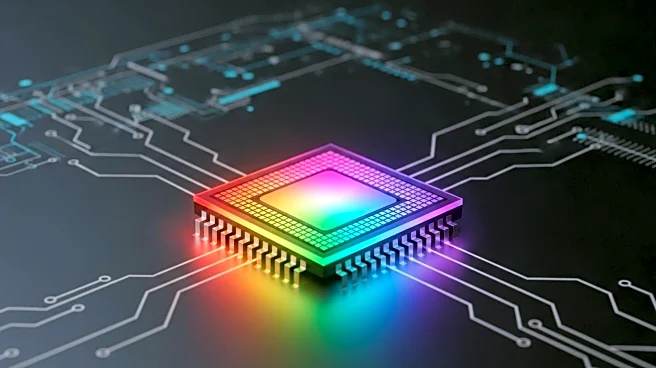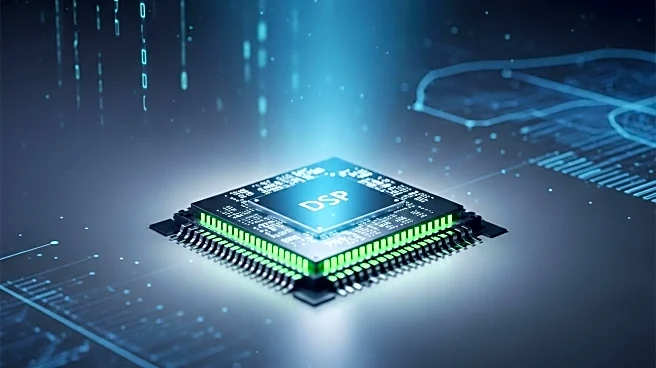What is the story about?
What's Happening?
Researchers at UBC have developed a chip-based device that acts as a 'universal translator' for quantum computers, converting microwave signals to optical ones with minimal loss. This innovation, known as a frequency comb, allows for the transmission of multiple data streams simultaneously, enhancing the efficiency of data centers. The technology utilizes a multimode laser diode integrated into a silicon photonics chip, purifying the laser's output to produce a stable beam. This breakthrough could lead to more compact and energy-efficient systems, replacing racks of individual lasers with a single device.
Why It's Important?
The development of the 'rainbow chip' is significant as it addresses the growing demand for efficient data transmission in data centers, especially with the rise of artificial intelligence. By enabling multiple data streams to run in parallel, this technology could revolutionize the way data is handled, potentially reducing costs and space requirements. The implications extend beyond data centers, with potential applications in portable spectrometers, optical clocks, quantum devices, and LiDAR systems, marking a substantial advancement in silicon photonics.
What's Next?
The next steps involve integrating this technology into real-world applications, potentially transforming data centers and other industries reliant on high-speed data transmission. As the technology becomes more compact and cost-effective, it could see widespread adoption, driving further innovation in communications and sensing technologies.
Beyond the Headlines
This development highlights the ongoing evolution of silicon photonics, a field crucial for advancing critical infrastructure. The ability to purify and stabilize powerful laser beams on a chip could lead to new standards in data transmission and sensing, impacting various sectors from telecommunications to healthcare.
AI Generated Content
Do you find this article useful?













